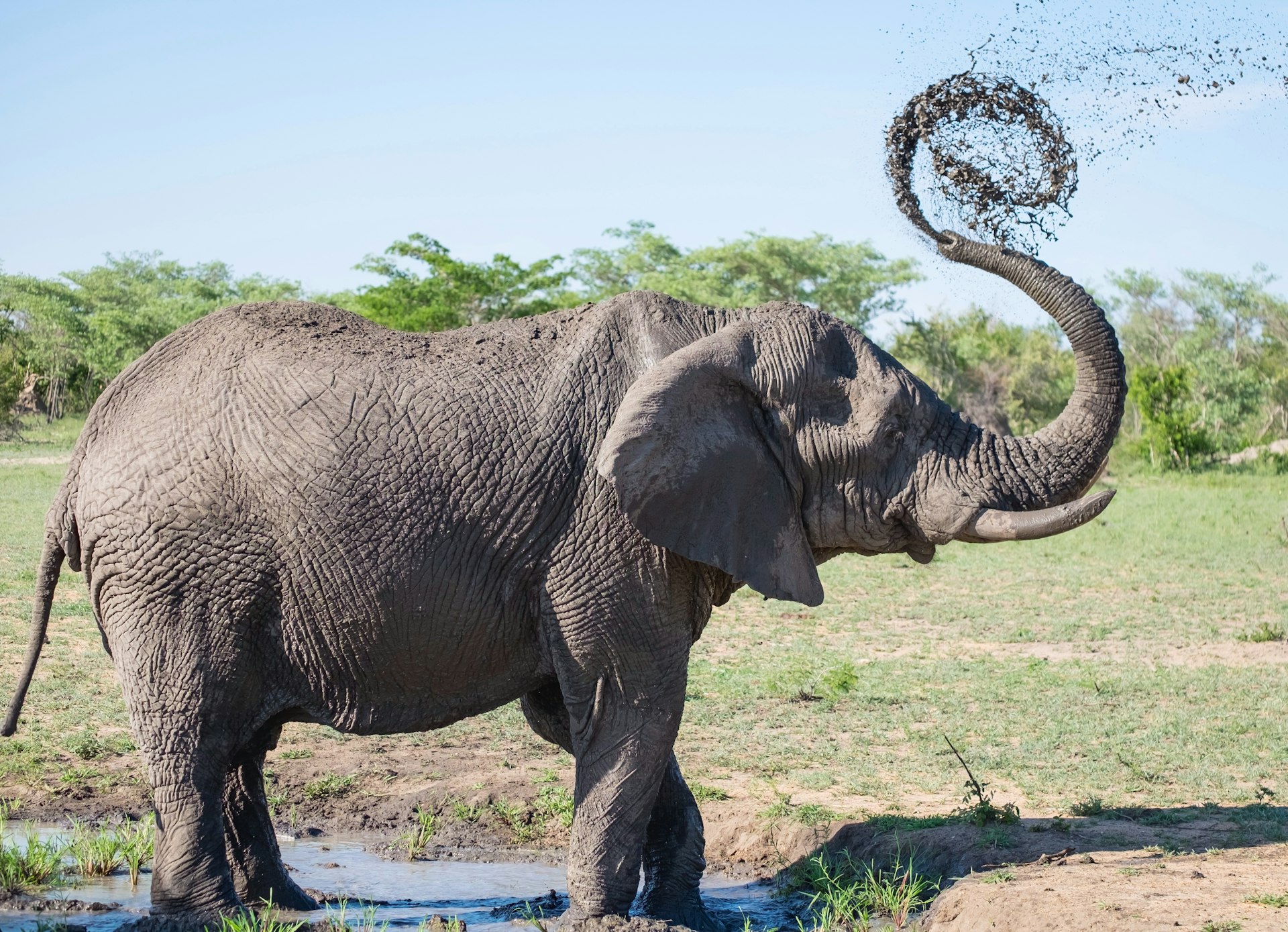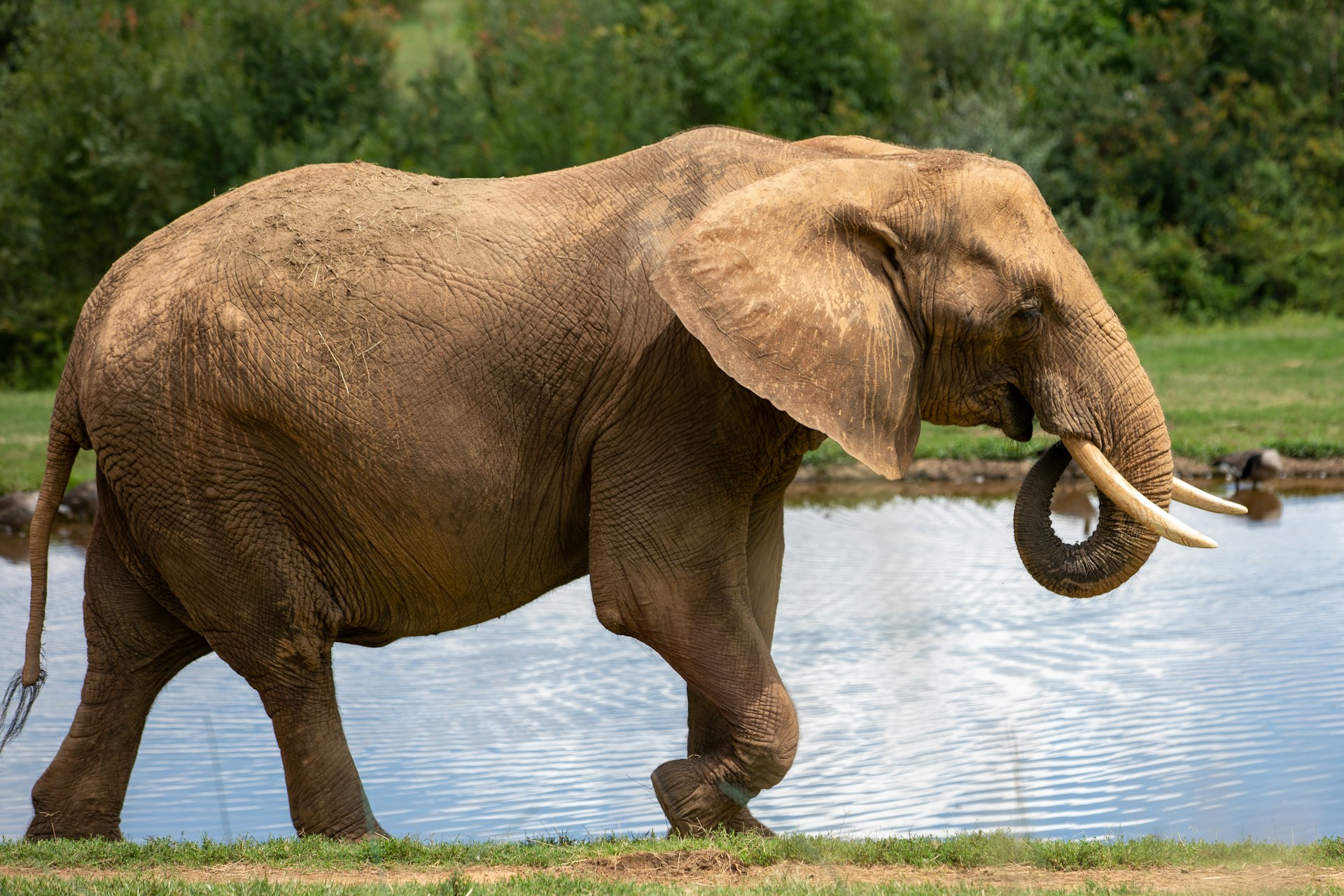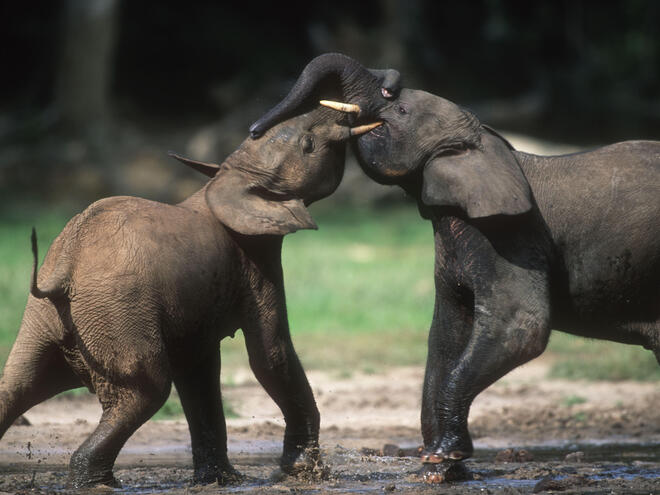Introduction
Elephants are among the most incredible creatures on our planet. They are the biggest land animals and are recognized for their wisdom, close-knit family, and mighty trunks. These gentle giants have captivated people for centuries.

Types of Elephants
There are three main types of elephants:
1.African Savanna Elephant
- Largest of all elephants, growing up to 13 feet (4 meters) tall and weighing around 10,000 to 14,000 pounds.
- Found in open grasslands (savannas) of Africa, mainly in countries like Kenya, Tanzania, and South Africa.
- Big ears shaped like the continent of Africa help them stay cool in the hot sun.
- Have long tusks, and both male and female elephants can grow them.
- Live in large family herds led by a matriarch (an experienced female leader).

2.African Forest Elephant
- Smaller than the African Savannah Elephant, growing up to 10 feet (3 meters) tall.
- Found in dense rainforests of Central and West Africa, especially in countries like Gabon and Cameroon.
- Have smaller, rounder ears compared to Savannah elephants.
- Their tusks are straighter and thinner than those of the Savannah elephant.
- Live in smaller herds due to the dense forests they live in.

3.Asian Elephant
- Found in Asia, mainly in India, Sri Lanka, Thailand, and Indonesia.
- Smaller than African elephants, growing up to 9–10 feet (3 meters) tall and weighing around 6,000 to 11,000 pounds.
- Have smaller ears (shaped like India’s map) and a more rounded back.
- Only male Asian elephants grow large tusks, while females either have small tusks (called "tushes") or none at all.
- More likely to be tamed and trained for work, festivals, and religious ceremonies.

Physical Features
- Size – Elephants are as tall as 13 feet and weigh between 5,000 and 14,000 pounds.
- Trunk – Their long trunk is used to drink water, grasp food, and even express emotions.
- Tusks – Long ivory teeth that are utilized for defense and digging.
- Ears – Larger ears than Asian elephants, which aid in keeping them cool.
Elephants’ Behavior
- Elephants are extremely intelligent animals. They possess excellent memories and can remember places as well as faces even after several years.
- They inhabit herds with a female elephant as a matriarch.
- Elephants express emotions such as happiness, sadness, and even grief upon the death of a loved one.
- They hug and console other elephants using their trunks.
Diet and Eating Habits
- Elephants are herbivores, meaning they eat only plants.
- They eat grass, leaves, fruits, and bark.
- An adult elephant eats 200-600 pounds of food every day and drinks up to 50 gallons of water!
Where Do Elephants Live?
- African elephants live in grasslands, forests, and savannas.
- Asian elephants live in jungles and forests in countries like India, Thailand, and Sri Lanka.
Why Are Elephants in Danger?
Sadly, elephants face many dangers:
- Poaching – Some people kill elephants for their ivory tusks, which is illegal but still happens.
- Habitat loss – As forests are cut down for farming and cities, elephants lose their homes.
- Human conflicts – Sometimes, elephants enter villages searching for food, leading to clashes with people.
How Can We Help Elephants?
- Support organizations that protect elephants and stop poaching.
- Avoid buying anything made from ivory.
- Spread awareness about elephant conservation.
- Support wildlife sanctuaries and national parks that protect elephant habitats.
Fun Facts About Elephants
- Elephants love water and enjoy playing in rivers.
- They can use their trunks like a straw to drink water.
- Baby elephants suck their trunks just like human babies suck their thumbs.
- Elephants can communicate through low rumbles that humans can’t hear.
Conclusion
Elephants are incredible creatures that deserve our love and protection. They are not just big animals but also caring, intelligent, and social beings. If we all work together, we can help save them for future generations to enjoy.
Would you like to see an elephant in real life? Let’s protect them so that one day, everyone can!